Continuing the ongoing series of interviews with creative artists working on various aspects of movie and TV productions, it is my pleasure to welcome Mark Steel. In this interview he talks about his path into the art department, the ever-changing landscape of episodic television that balances the cinematic scale with shrinking timelines, the day-to-day responsibilities of an art director on set, the present and potential future of combining visual effects with physical world building, and the place of virtual reality tools in simulated set environments. The second half of the interview is about Mark’s work on recently released “Miss Sloane”, a story that follows a formidable D.C. power-broker played by Jessica Chastain and her fight against the powerful gun lobby.
Kirill: Please tell us about yourself, and your path into the art department.
Mark: I was born in Vancouver and grew up in Ottawa. I watched a lot of TV when I was a kid. I was into animation and horror which lead to a fascination with make up and special effects. I began reading Fangora magazine and other such publications, which really introduced me to the whole behind-the-scenes world of film. In my last year of high school I was offered a co-op program at a local community cable TV station. There I got to direct all sorts of studio shows, local remote and mobile shoots.
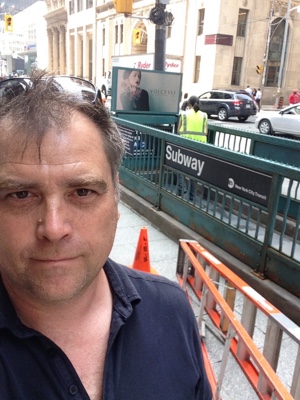 I then went to post secondary school at Ryerson in Toronto for Radio and Television Arts. I actually wanted to be a TV director when I graduated. I found myself at the CBC as a stagehand, and began working in set decoration and props. The CBC at the time was in decline, but a lot of the old system of designers, art directors, builders, costumes, FX and all the other trades were still under one roof. It was really a wonderful and sadly broken creative place. I learned a tremendous amount about all the crafts and talents that went into production.
I then went to post secondary school at Ryerson in Toronto for Radio and Television Arts. I actually wanted to be a TV director when I graduated. I found myself at the CBC as a stagehand, and began working in set decoration and props. The CBC at the time was in decline, but a lot of the old system of designers, art directors, builders, costumes, FX and all the other trades were still under one roof. It was really a wonderful and sadly broken creative place. I learned a tremendous amount about all the crafts and talents that went into production.
I worked on the last two seasons of a popular comedy series called “Kids in the Hall”. It was a highly creative show. We did hundreds of sets a season to be shot as 16mm short films, three camera studio bits, with live audience segments. It was really a master class in pushing the boundaries in television at the time.
When I left the CBC, I found that my experience as a set decorator was most in demand. Toronto production was growing, and we had three unions in the city. I did a lot of Canadian TV series and movies of the week for US networks. I found myself working with local and US production designers, and eventually I was asked by a local PD to step in as an art director on a TV series for a Disney cable channel sci-fi series. I have been working primarily as an Art Director for US projects in Toronto although I have been all over Canada and some of the Caribbean.
Kirill: What drew you into the film / TV industry, and how has that changed after a few productions?
Mark: It’s the best part-time job anyone ever has to start. While I was still in school, I had a friend who was working on film sets as a production assistant. I had an occasion to visit and found that environment to be very appealing. My early years at the CBC was a sort of institutionalized experience that was in the process of dying, as government funding was being stripped away and I really had no future there. I knew there was this “outside” industry in Toronto, and with a few connections I realized that I could make a living in the art department as a Set Decorator.
As a young person, I was very into the circus of it all. Rolling onto locations, completely taking over a space, transforming it and disappearing again without a trace. What I also began to realize very early was that I really didn’t have the patience to work on set with the shooting crew. I found the pace and the hierarchal nature of a film set to be tedious. I much preferred to take part in the research, sourcing, prep and installation of sets. I excelled as a Leadman and Set Decorator and began to build my brand off-set in the Art Department.
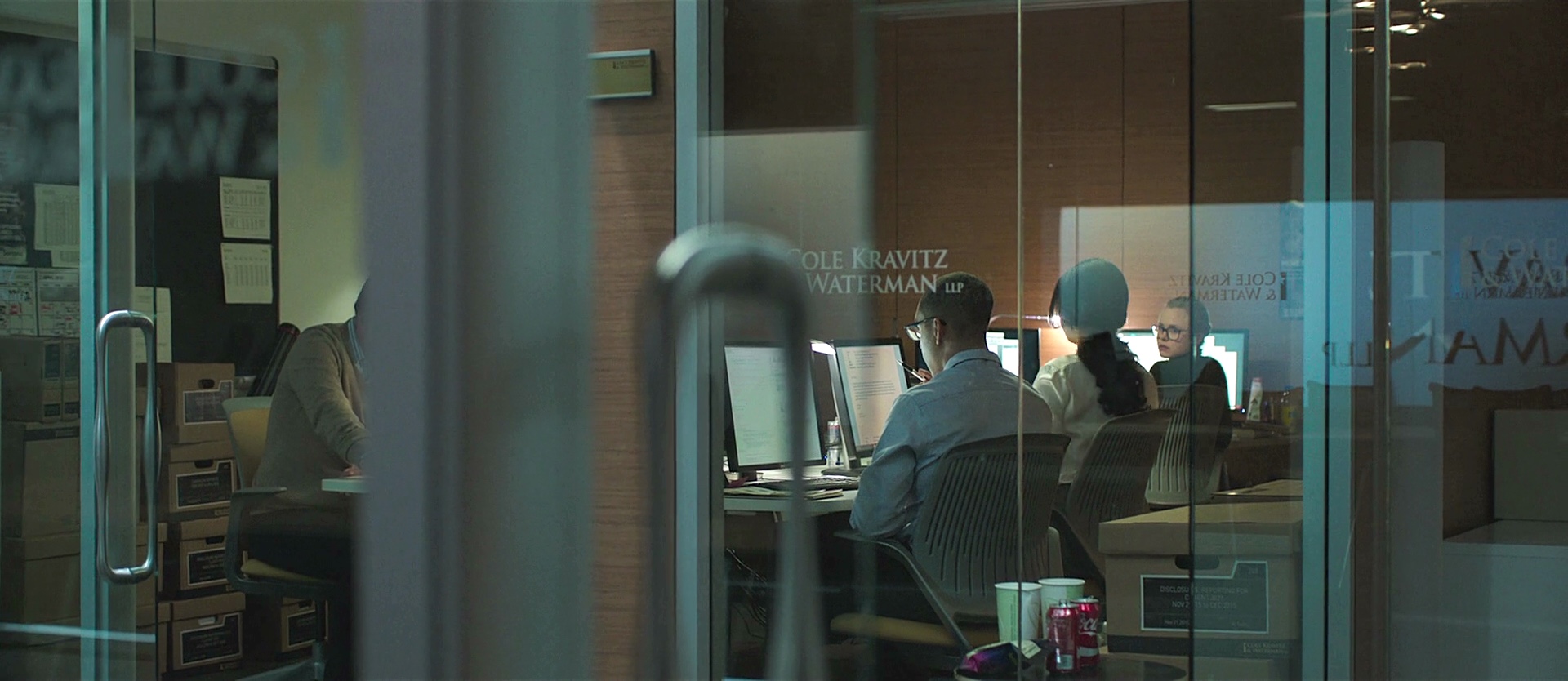
Kirill: As you have done a variety of both feature and episodic productions, how would you compare the pace of the two worlds?
Mark: They are really not that fundamentally different, especially these days. I developed my skills primarily in TV series where mastering scheduling was key. My training and the goals of my early mentors was to create “feature” quality look in spite of budget and schedule constraints. Progressively, the quality and demand of television series increased through the late 2000’s. At the same time many productions also demanded more for less.
I can’t say when it was exactly over that period of time that I honed the ability to deliver on shorter and shorter timelines. 8 weeks of prep became 6 weeks that became 4 and so on, but the principal tool constantly employed is communication. It is all about prioritizing the creative needs and getting to consensus as efficiently and respectfully as possible. In TV that is almost always the Producer’s call. In features it is the Director’s.
On a TV series most of the time the Director is a guest. Usually he or she has the experience with the format and understands how to efficiently get what is needed out of a shooting day. My contact with the Director is typically about problem solving around scheduling constraints and to guide them through the possibilities on standing sets. Although schedule remains a reality in the feature world as well, the priorities are driven by the Director’s vision. Depending on his / her status and the budget, greater degrees of deference must be payed. Expectations are infinitely scalable, but in the end every project has many of the same steps.
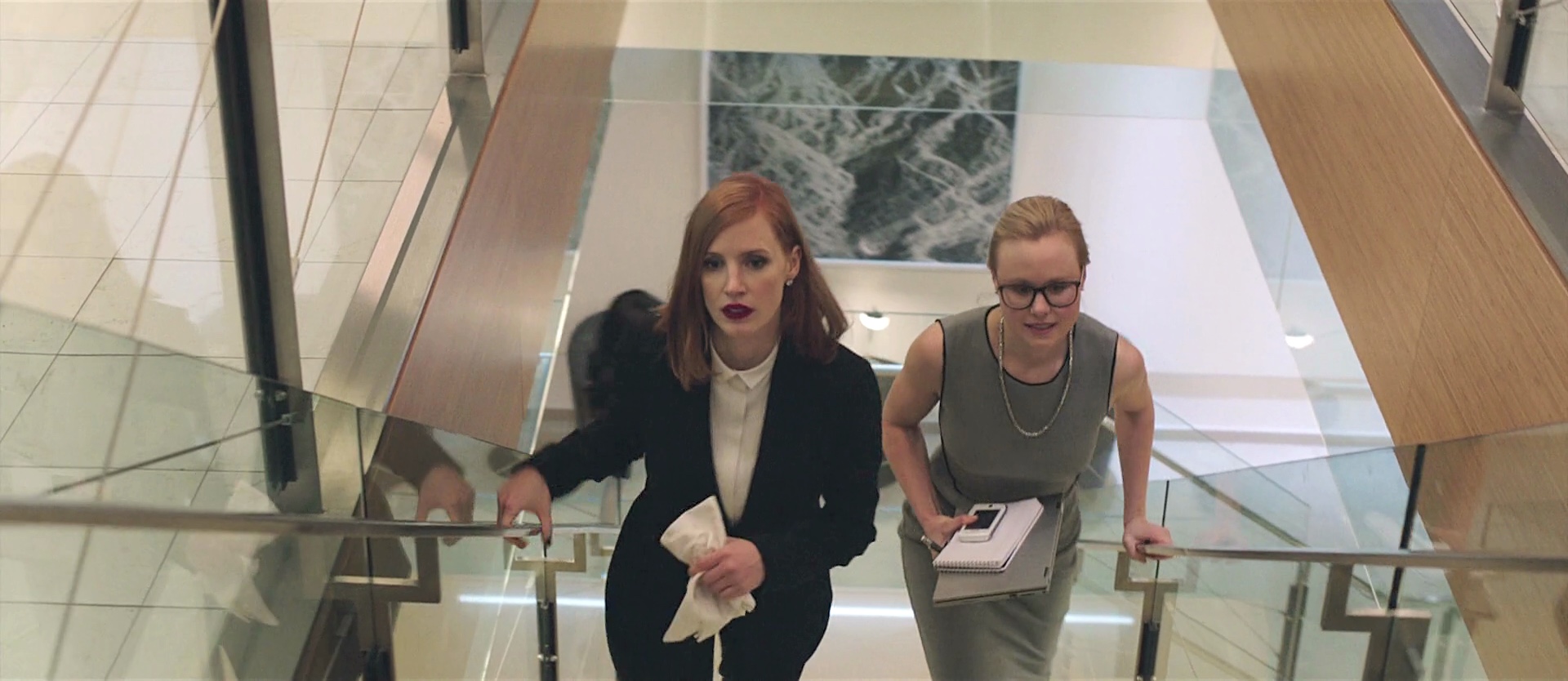
Continue reading »
Continuing the ongoing series of interviews with creative artists working on various aspects of movie and TV productions, it is my pleasure to welcome Tom Lisowski. In this interview he talks about what production design is, when it needs to stay invisible and the misconceptions viewers have about the field, how the transition from film to digital affected what happens on set, balancing artistic and financial aspects of a production, shifts in the world of story telling between features, episodic TV and streaming services, as well as his work on music videos and commercials. The second half of the interview is about Tom’s work on the recently released “Safelight”, a journey of two troubled teenagers that takes them from a highway truck stop to a road trip down the California coast to photograph lighthouses.
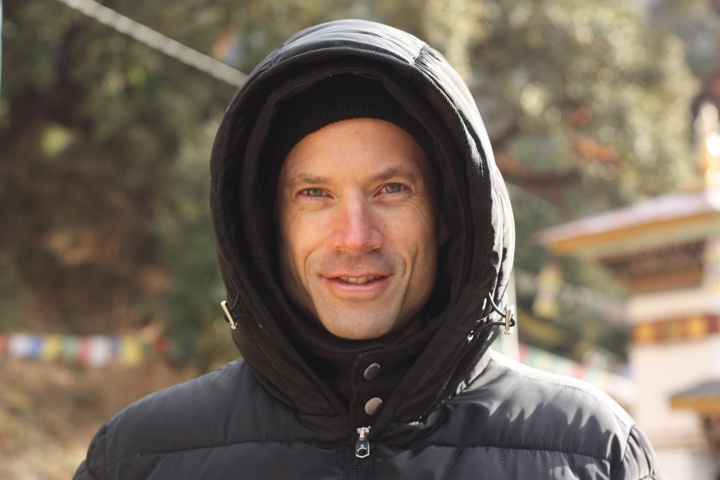
Kirill: Please tell us about yourself and your path so far.
Tom: I went to art school where I studied painting, and after that I started doing art for video games. My forte was environments – basically the same thing that I do for movies now. Because I was doing games I was hired to do a mural for a city cafe set on a TV show. The mural had some videogame-style characters in it. The production designer of the show asked me if I could also draw pictures of the sets. I ended up becoming her art director for a few different projects, TV and features. I discovered production design through her. I did go to art school, but at the time I wasn’t aware the field of production design existed. I love how through your interviews you’re bringing awareness to a field that most people are unaware of.
People know that there’s a director, a cinematographer, and actors, but they don’t know there’s a production designer. A lot of times that’s a good sign. They are in an environment and they don’t know that it was created by someone. If you do a good job, they believe it’s a real place.
Kirill: When people ask you what you do for a living, is it hard to make people understand, especially when we’re talking about productions set in the modern day? After all, we all are surrounded by these environments every single day.
Tom: There’s definitely a misconception about movies set in the modern day. Everything is recognizable, and you’re not in a cave or a castle. The misconception is that someone just showed up with the camera and shot everything. But it’s the same as when you’re writing a novel and choosing what part of an experience to describe. In a movie you’re very careful to choose what the audience sees.
Also, certain things generally look bad on camera, for example white walls. And there are certain elements and props that you use to tell your story. If a character is cold, you want your set dressing to communicate that. You tell the story through the environments, and everything in that whole movie is supporting that story. Everything you do is based on telling the story, whereas in real life everything is totally random [laughs].
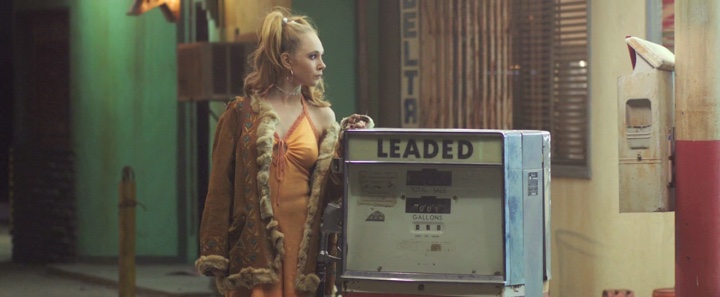
Kirill: I like that you mentioned that if you do your job well, it is unseen in a certain sense. As a viewer, I want to follow the story and not look at that wall. You want to send that subliminal message, but not be explicit about it.
Tom: Exactly. We always talk about whether the production design should be invisible or visible. It depends. If you’re going to an alien planet, you’re showing an environment that nobody has ever seen before. A big part of the experience is seeing something amazing, and the audience is definitely noticing it. You’re looking at that environment, and it becomes a huge part of the experience. Some people say that the set becomes a character.
But at the same time, you don’t want the audience to be thinking about it. If somebody is designing the costumes for the characters, you want the viewer to believe that they just woke up that morning and put those clothes on. If you start thinking about what goes on behind the scenes, it takes you out of the story. But there are movies where our work is center stage.
Kirill: Does it help to have the digital pipeline on the set, where you together with the director and the cinematographer can see on the monitor how the sets are captured by the camera?
Tom: That’s especially important for the on-set dresser. They are making sure that everything that needs to be in the frame is in there. I try to be on the set as much as possible. I’m always there when we open the set and start shooting. As much as I can be I’m there to see the set through to completion.
However, a lot of the time I’m also hard at work on the next set. Often the next location isn’t available until the very last minute, so we have to be building and dressing while we’re shooting something else. So I’ll be there, looking at the monitors to make sure everything looks good, and then I have to be off to the next set. I’ll have my on-set team continue to check the monitor constantly.
Nowadays you can see the edits as you’re working on the movie. Not long after you shoot it you can see a rough cut of the scene you just did, and the director will know if something’s missing. Back in the day you had to wait forever for the film to be developed, and then for somebody to cut it together.
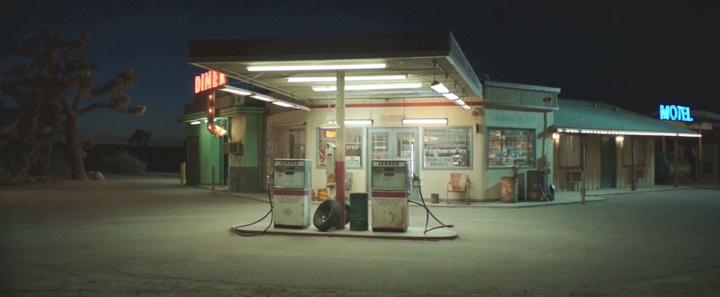
Kirill: Do you remember a sense of things going unnecessary slow back then?
Tom: You had to trust your gut and use your imagination a lot more when you couldn’t see it. And all the amazing film-makers didn’t see any of it back in the day when everything was done on film. They would go with their gut and hope that everything was great. Now you can see it sooner, and that makes you become a better production designer, faster.
Kirill: Bringing you back to the beginning of your career on set, what was the most surprising thing you saw around how movies are made?
Tom: I was always blown away to see the really big sets. The mechanics of it is amazing. You see a big cave, and you think that somebody brought in all these big rocks. But it’s all carved out of foam, and painted amazingly well. Or you’re looking at the walls of this mansion, and they are just a very thin piece of lauan plywood. It was eye-opening to see a lot of that stuff.
When I went from video games to the world of movies, I loved the physical aspect of everything. I loved that you can stand in front of it, look at it and walk around it. Before that I had textured polygons on a computer screen. But seeing everything in real life was a big part of the magic of it.
There are also sets where you use forced perspective, with smaller things in the back and bigger things in the front. That tripped me out early on, and I try to use that in my sets sometimes when we want to make the set seem bigger. We had this graveyard set, and we built it all on a stage. We wanted to make it feel like it went on forever, so the trees in the back are smaller so that they look like they’re further away.
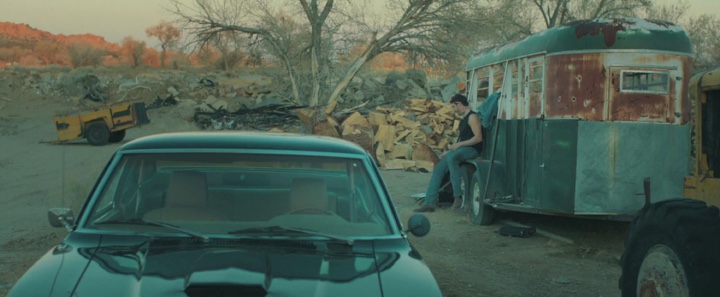
Continue reading »
Continuing the ongoing series of interviews with creative artists working on various aspects of movie and TV productions, it is my delight to welcome Anastasia White. After doing art direction on the pilot episode of “Mr Robot”, she joined the second season as the show’s production designer. In this interview Anastasia talks about her first memories of working on movies, her journey through the various roles in the art department, the arc of a production from initial explorations to watching sets being torn down at the end, and evolving and extending the Mr Robot’s universe (including the delightful trip down the memory lane back to the ’90s for an especially wonderful twist).
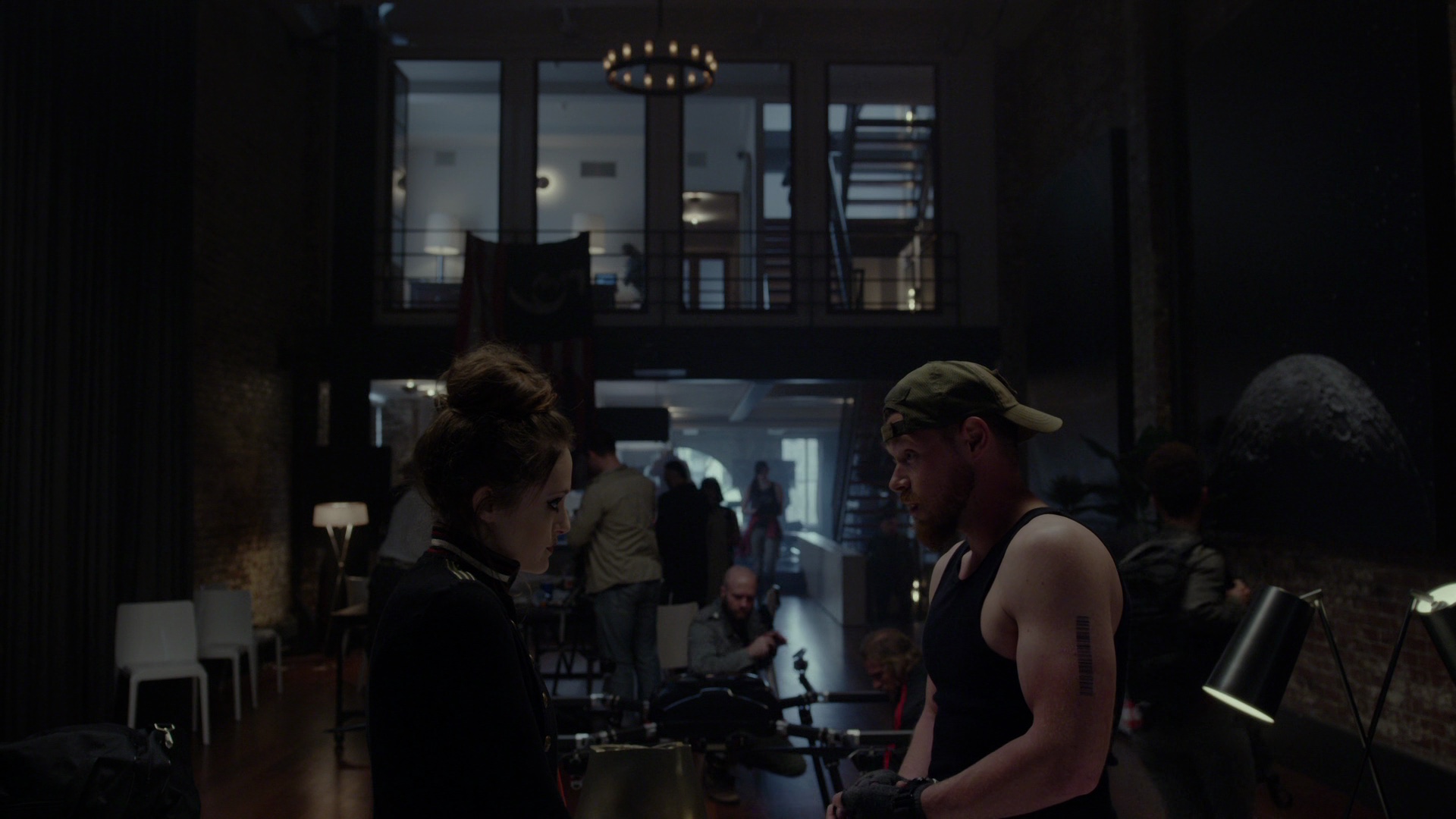
Kirill: Please tells us about yourself and your path so far.
Anastasia: Throughout college I was in the music business as a side job. While I was there, I realized that I wanted to do something a little bit more creative, and I left music industry when I graduated college and went to a graduate architecture school. I wanted to create more and be more artistic, but I eventually left that as well [laughs] as I didn’t like the structure of everything.
I worked for a couple of years for an architecture firm that did interior design. When the economy went bad, I was laid off along with more than half of my office. The day I was laid off I had a trip planned to New York. I always wanted to live in New York, and I thought it would be my chance to get a job there [laughs]. When I came back, I spent two-three months researching what types of careers I could move towards with the skills that I had from the architecture school.
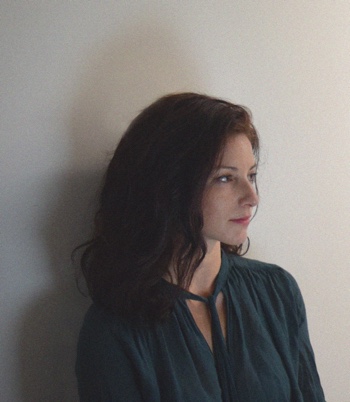 I never went to a film school, but it sort of presented itself as something interesting that I thought I could do. I researched the production designers that were based in New York City, hoping to get an apprenticeship. Mark Friedberg was the one I wanted to work for, and luckily when I reached out to him, he got me a PA job within about a month. I did a few projects with him as a PA over the next two years, and I thought that art department coordinator was the next logical step. I wanted to learn about what everybody does, how to work with the budget, etc, and that’s what I did for about a year. While I was doing that, I started drafting and doing graphics as an assistant art director, and continued working my way up really.
I never went to a film school, but it sort of presented itself as something interesting that I thought I could do. I researched the production designers that were based in New York City, hoping to get an apprenticeship. Mark Friedberg was the one I wanted to work for, and luckily when I reached out to him, he got me a PA job within about a month. I did a few projects with him as a PA over the next two years, and I thought that art department coordinator was the next logical step. I wanted to learn about what everybody does, how to work with the budget, etc, and that’s what I did for about a year. While I was doing that, I started drafting and doing graphics as an assistant art director, and continued working my way up really.
Kirill: If I can bring you back to those few months in this field, do you remember what was the biggest surprise for you as you saw how productions work from the inside?
Anastasia: I think it was seeing how many people are involved in each department, and how much detail goes into everything. I thought that since it’s on camera, and the audience is so far removed from everything, that these tiny details wouldn’t be noticed. And then pretty quickly I realized that they do matter, even more than a lot of other things.
Kirill: Has working in the industry ruined, in some way, the enjoyment of going out and seeing a movie in the theaters, as you know that what we see on that screen is not real, in a sense?
Anastasia: Definitely. I try to keep myself removed from all that. But if I love a set, I will keep my attention on the way it is framed, or the color palette. I will also start thinking if it was built on stage, or shot on location. I do that all the time, no matter what. It’s hard for me not to think about it. If there’s a tense moment or a very fast moving sequence, I’ll be taken out of it. But I always go back to think about the sets, unfortunately [laughs].
Kirill: When you look back at your earlier productions that are a few years into the past, what stays with you? Are those the good parts that you remember, or the stressful ones?
Anastasia: I remember both. The stressful parts end up fading. I know that I was stressed on every job that I’ve done so far, during certain moments of it. If it’s a big stress, it stays with me, but if it’s the general stress, my memories are just that I worked a lot. I also remember the rewarding moments, and things that were fun to work on.
I learn from everything. If I was stressed about something in particular, I don’t think I’ll be stressed about that particular thing again in the future. I learned from it. I learned how to not create stress around it.
Kirill: Is there such a think as a production with no stress?
Anastasia: There are productions that have, perhaps, a couple of stressful days. I don’t think there’s a production that is stressful every single day from the very beginning. I think there are certain anxieties that go away with experience.
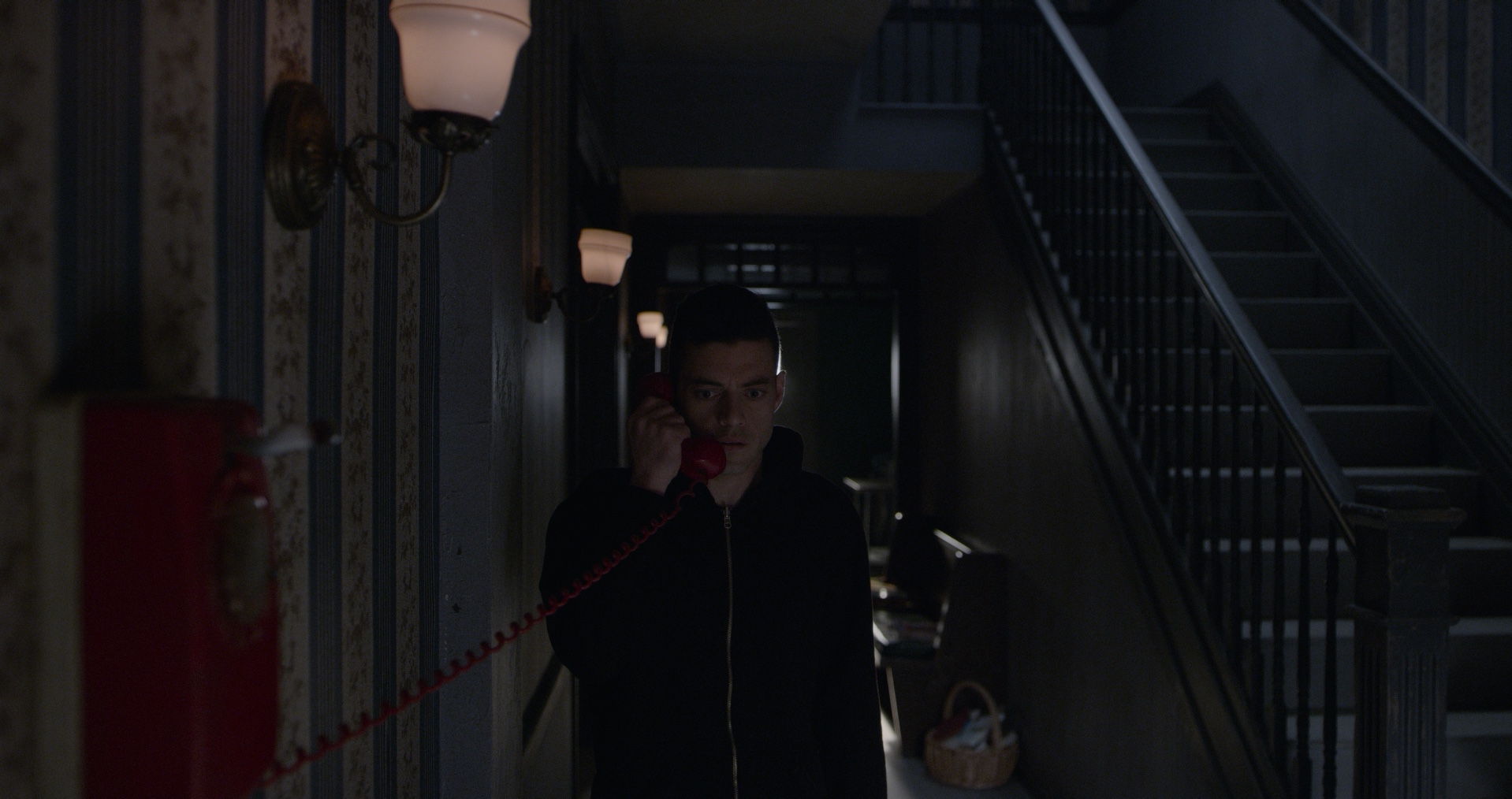
Continue reading »
Continuing the ongoing series of interviews with creative artists working on various aspects of movie and TV productions, it is my delight to welcome Derek Spears. Since joining the Rhythm & Hues Studios about fifteen years ago, Derek has worked on feature films such as “Red Riding Hood”, “The Mummy: Tomb of the Dragon Emperor,” “Superman Returns” and “X-Men: Days Of Future Past”. Most recently, his work as the Visual Effects Supervisor on HBO’s magnificent “Game of Thrones” has won back-to-back Emmy awards for Outstanding Visual Effects.
In this interview Derek talks about the early days of digital visual effects [VFX] and the evolution of the tools since then, the human-intensive parts of the VFX pipeline and his thoughts on what may happen in those areas in the next few years, the discussions that take place between the art department and the VFX department on building things physically, digitally or as hybrid, and the never-ending quest to take the audience on a wild ride of visual storytelling magic. The second part of the interview is all about the last two seasons of “Game of Thrones”, from creating the fire-breathing dragons to meticulously crafting the more “invisible” parts of Westeros and Essos, such as crowds and digital buildings.
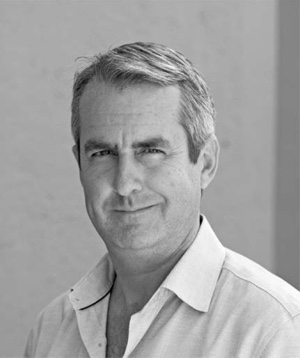 Kirill: Please tell us about yourself and how you started in the field.
Kirill: Please tell us about yourself and how you started in the field.
Derek: My background is in software engineering. I worked at Silicon Graphics for a few years in the apps development group. During my time there I worked with Kodak to help develop their compositing system, and after that I joined Cinesite to help them start their 3D graphics department. After that I worked at Digital Domain, and now I am a Visual Effects Supervisor at Rhythm & Hues on features and episodic shows. There I’ve worked on “Game of Thrones”, “Black Sails” and “Walking Dead” in the episodic world, and on features such as “R.I.P.D.”, “The Mummy: Tomb of the Dragon Emperor,” “Superman Returns” and others.
My background is in computer graphics and the technology world, but I’ve always enjoyed the intersection of art and technology that visual effects has provided.
Kirill: Would it be correct to say that you’ve joined the field when digital was starting, and there were a lot of special effects with animatronics and other physical approaches?
Derek: Digital was still in its ascendancy back then. People were still trying to understand how it worked. It was very much the Wild West, the frontier type of landscape at that point in time. There were no well-developed ideas that we have now, like pipelines, render cues and various approaches and methodologies. We were learning at the time, and it was very interesting to be a part of that.
Kirill: Do you remember how it felt on your first few productions, as you “lifted the veil” and saw how the magic of movies looks like on the inside?
Derek: It was interesting to learn how a production was done. Coming from an engineering background, filmmaking was a new thing for me. The interesting thing about those early days was that every new show you got to, you had to sit down and decide how to do it. There was no well established methodology.
We didn’t typically use ray tracing. RenderMan was very popular at the time, and there were some other choices – such as Softimage and Mental Ray. The choices then tended to be non-homogenous. The options now are more developed, but also more similar in their approach to solve the problem. It was a bit more interesting in the early days. You had to get out there and figure out how to do things.
It was a much bigger chance of failure because it hadn’t been done before. Now if somebody asks you to do something, the chances are that you’ve done something similar to it, and that it’s going to fit into the existing pipeline. We have tools for various situations, and that is not true for the early days.
Kirill: Looking at the evolution of hardware and software at your disposal, would you say that they’ve kept up with demands from the production side to keep on increasing the level of sophistication of the worlds you’re building?
Derek: There are a couple of interesting things here. There’s always the attempt to decrease the amount of human labour in any given problem. Lighting is the one that has made the most advances out of the many disciplines. It used to be a very difficult and time-consuming problem. Now you can capture light on set and then quickly recreate a very close approximation of it in render without a lot of experimentation. You still have to do a lot of work for modeling and texturing as the setup, but the actual lighting process is rather quick.
Animation and motion capture has helped, but I don’t think that it has taken a lot of labour out of animation. There are tools that are better at rigging, but it’s still an extremely labour-intensive process. The same goes for compositing. There’s a much larger toolset to make things work a lot better in a lot more difficult situations, but what we find is that complexity of the problem matches the efficiency of the tools. For everything that gets faster, the complexity is increasing. It used to take 12 hours to render a chrome sphere and now it takes 12 hours to render a dragon. It’s the same time to render, but you get a lot more for it.
I don’t think that things ever get simpler. It’s rather that the available resources increase the complexity.
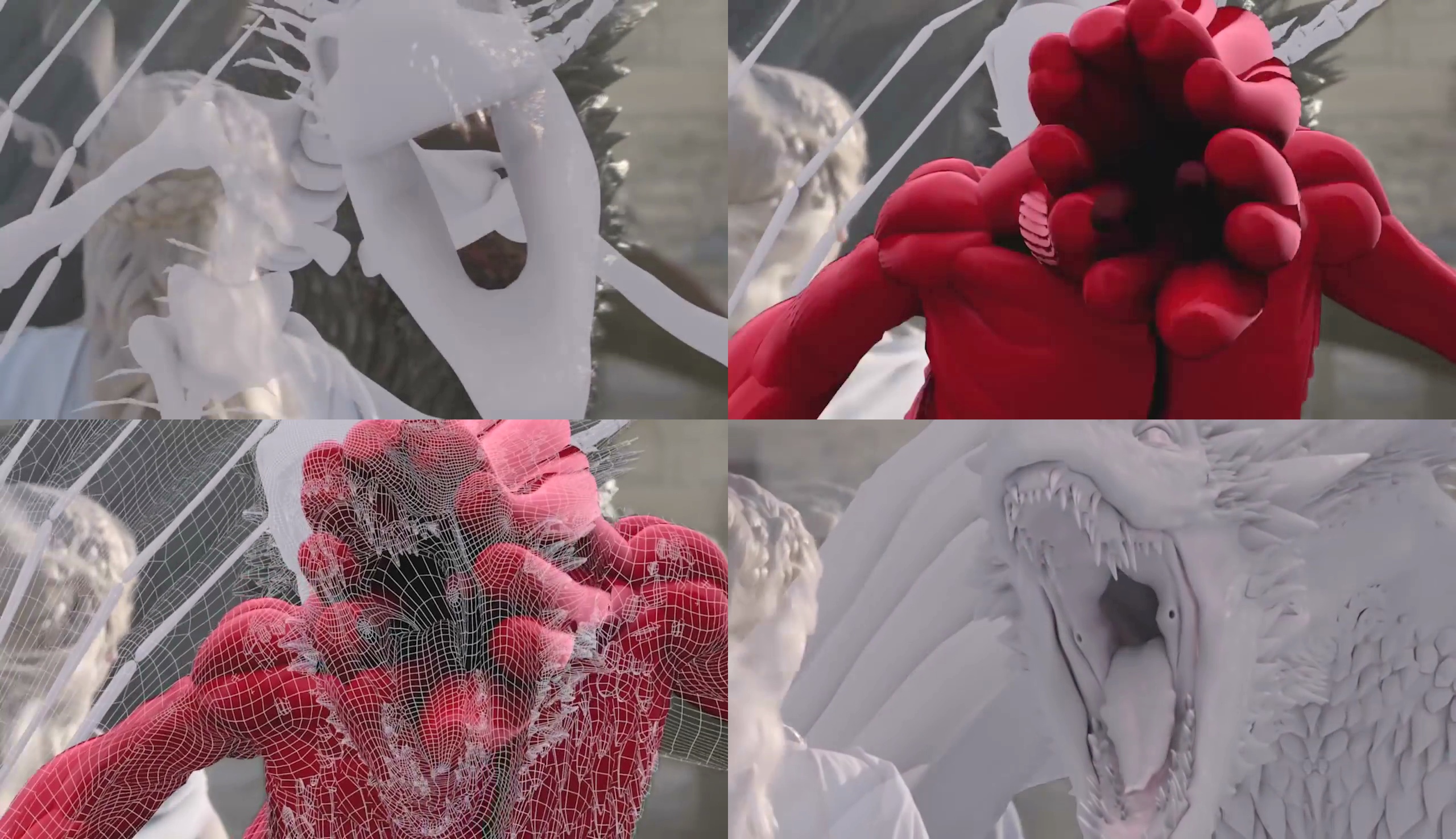
Progressive layers in VFX for “Game of Thrones” by Rhythm & Hues.
Kirill: Now that there’s so much being done in the digital pipeline of VFX, is there any friction between the art department that lives in the world of physical sets, and the VFX department that is creating all these fantastical sets in pixels?
Derek: In many ways, the art department and the VFX department are quite complimentary. What the art department designs, the VFX department has to realize. In some places we’ve seen crossovers, like on “Oblivion” where the art director came from the VFX background. I haven’t seen any tension between the two departments on the productions I’ve been involved with. It’s always very cooperative, to the point of how can we involve the art department to help design and solve some of the VFX problems.
In fact, it gets so close on some of the shows. On one of the shows that we’re working on right now, we’re acting as part of the art department to help design creatures. I view it as a synergistic relationship.
If you’re talking about trade-offs, one of the things that you have to figure out is that everything costs money to do. When you design a big set of platform for your show to work on, one of the things that the two departments have to work out is what is the most cost-effective way to do that. How much are we going to do practically? How much are we going to do in VFX? In no way is that a combative relationship. Together we figure out the best way to not break everybody’s budget. Usually that works very nicely.
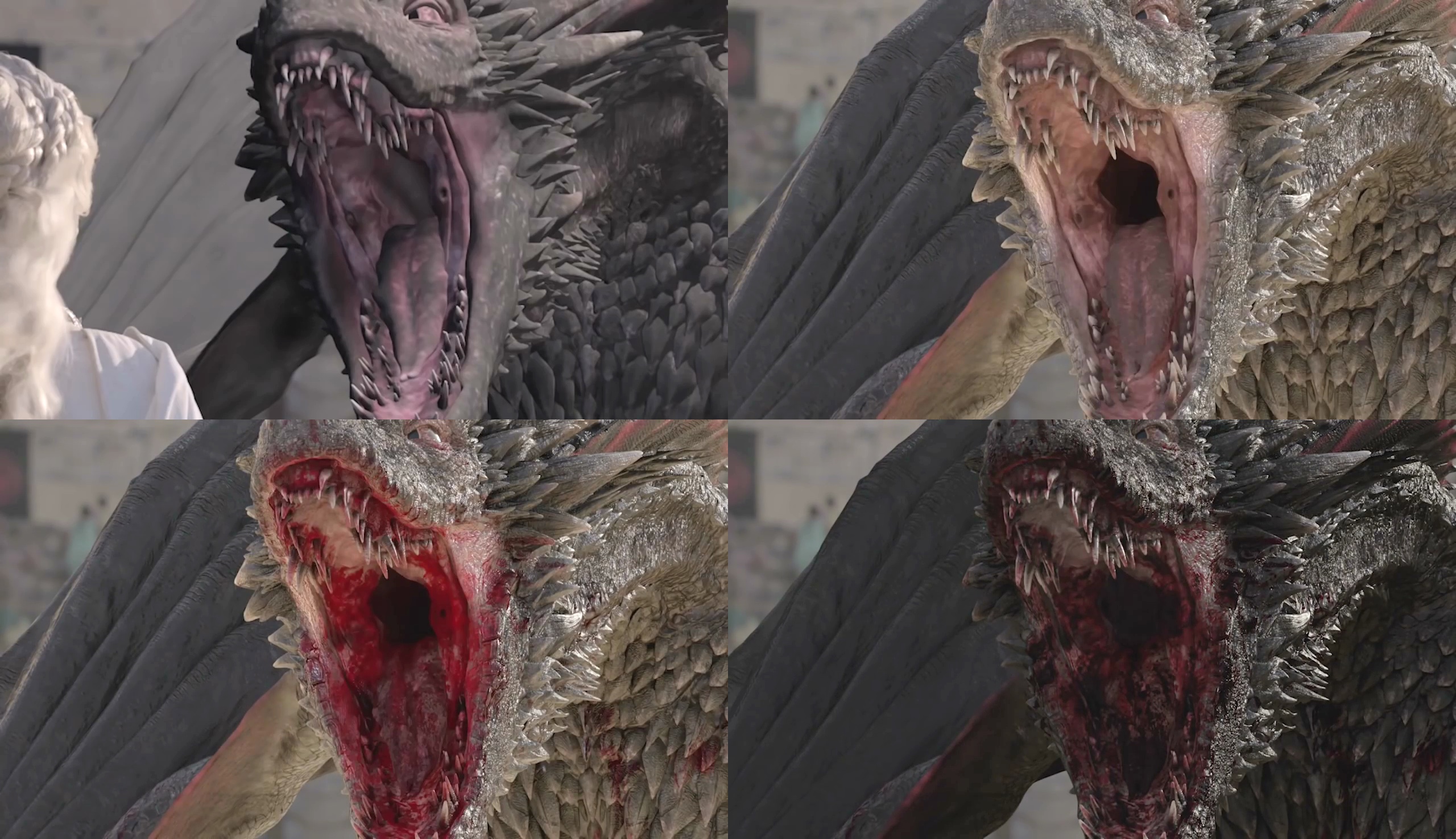
Progressive layers in VFX for “Game of Thrones” by Rhythm & Hues.
Continue reading »
![]() I then went to post secondary school at Ryerson in Toronto for Radio and Television Arts. I actually wanted to be a TV director when I graduated. I found myself at the CBC as a stagehand, and began working in set decoration and props. The CBC at the time was in decline, but a lot of the old system of designers, art directors, builders, costumes, FX and all the other trades were still under one roof. It was really a wonderful and sadly broken creative place. I learned a tremendous amount about all the crafts and talents that went into production.
I then went to post secondary school at Ryerson in Toronto for Radio and Television Arts. I actually wanted to be a TV director when I graduated. I found myself at the CBC as a stagehand, and began working in set decoration and props. The CBC at the time was in decline, but a lot of the old system of designers, art directors, builders, costumes, FX and all the other trades were still under one roof. It was really a wonderful and sadly broken creative place. I learned a tremendous amount about all the crafts and talents that went into production.![]()
![]()